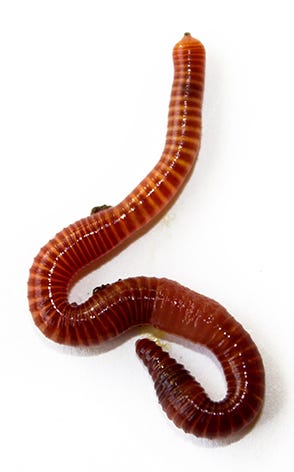Healthy red worms: How to start composting
Healthy red worms: How to start composting
Blog Article
Everything You Required to Know Regarding Red Wigglers for Composting
Red wigglers, or Eisenia fetida, play a pivotal role in the realm of composting, changing organic waste right into important soil amendments. The process of establishing up a worm container and preserving it can posture challenges.
What Are Red Wigglers?

(red worms for sale)
Belonging To The United States and copyright, red wigglers are surface-dwelling microorganisms that like damp, cozy habitats abundant in disintegrating organic issue. Their diet plan is composed mainly of decaying plant product, food scraps, and various other organic particles, which they consume and damage down efficiently. As they absorb this product, they produce nutrient-rich castings that boost soil fertility.
Red wigglers are hermaphroditic, possessing both male and female reproductive body organs, and can recreate promptly under optimum conditions. In general, red wigglers are important factors to the process of reusing organic waste into beneficial garden compost.
Benefits of Utilizing Red Wigglers
Making use of red wigglers in composting systems offers various advantages that boost both the efficiency of waste administration and the quality of the resulting garden compost. These worms, medically understood as Eisenia fetida, are particularly effective at damaging down organic matter, transforming kitchen scraps and yard waste right into nutrient-rich compost at an accelerated rate.
Among the main advantages of using red wigglers is their ability to consume huge amounts of natural product, often processing their weight in food waste daily. This high intake price brings about faster decay and minimizes the quantity of waste sent to garbage dumps. Furthermore, the castings generated by red wigglers are abundant in necessary nutrients, helpful microorganisms, and enzymes, making them an outstanding fertilizer for gardens and plants.
Furthermore, red wigglers flourish in a selection of environments, making them versatile for both indoor and outdoor composting systems - red wigglers. Their visibility in a compost bin aids to aerate the product, stopping smells and promoting a healthy and balanced composting process. Generally, utilizing red wigglers not just adds to reliable waste management yet additionally supports lasting horticulture methods with the manufacturing of high-grade garden compost
(NC Worm Farms)
Setting Up Your Worm Bin
To efficiently set up a worm container, it is necessary to pick an appropriate container that fulfills the requirements of red wigglers while giving a conducive environment for composting. An ideal bin can be made from plastic, timber, or steel, with a capability of at the very least 1 square foot for every single extra pound of worms.
Make sure the container has adequate drain see this openings to avoid excess moisture, as red wigglers flourish in a damp, but not water logged, environment. red wigglers. The bin ought to additionally be ventilated to provide sufficient air movement, preventing anaerobic problems that can hurt the worms
An ideal area for the worm container is a trendy, dark location, devoid of direct sunshine and extreme temperatures, as red wigglers like a temperature variety of 55 to 77 levels Fahrenheit.
Before presenting the worms, prepare bedding products such as shredded paper, cardboard, or coconut coir, which will offer both habitat and food. Dampen the bed linen gently to create an inviting atmosphere for the worms. Consider putting a lid on the bin to keep humidity and reduce bugs, while guaranteeing it can be conveniently removed for maintenance.
Feeding and Care Standards
Feeding red wigglers is an important aspect of keeping a healthy and balanced composting system. These worms prosper on a diverse diet plan, largely made up of organic materials such as vegetables and fruit scraps, coffee grounds, and smashed eggshells. It is vital to stay clear of feeding them meat, milk, and oily foods, as these can produce unpleasant smells and attract pests.
When presenting food to your worm bin, cut or shred materials right into smaller sized pieces to promote quicker disintegration. Beginning with percentages to evaluate the worms' usage price, progressively boosting the amount as they adapt. It is advisable to alternative feeding locations within the bin to encourage complete blending and aeration of the garden compost.

Troubleshooting Common Issues
Preserving a prospering worm composting system can in some cases offer difficulties that require interest and troubleshooting. Typical problems include an undesirable odor, which commonly suggests overfeeding or the existence of anaerobic conditions. To remedy this, reduce the quantity of food included and guarantee appropriate oygenation by mixing the bed linen product.
Another regular issue is the getaway of worms from the container. This can occur as a result of excessive moisture or inappropriate environmental problems. Routinely inspect the moisture degrees, intending for a wet yet not soggy consistency, and keep ideal temperature levels in between 60-80 ° F(15-27 ° C )to develop a comfy habitat for your red wigglers.
Parasites, such as fruit flies, can likewise get into worm bins. red wigglers. To battle this, cover food scraps with a layer of bed linen or shredded paper to discourage flies from laying eggs. Furthermore, ensure that any food included is fresh and without mold, which can draw in undesirable parasites
Last but not least, if your worms seem inactive, look for anxiety variables such as temperature level fluctuations or insufficient moisture. Resolving these common concerns will certainly assist preserve a healthy and balanced and productive worm composting system.
Final Thought
In summary, red wigglers, or Eisenia fetida, play an essential role in lasting waste monitoring via vermicomposting. Appropriate setup and upkeep of a worm container, along with adherence to feeding standards, guarantee a thriving ecosystem that decreases landfill payments.
Report this page